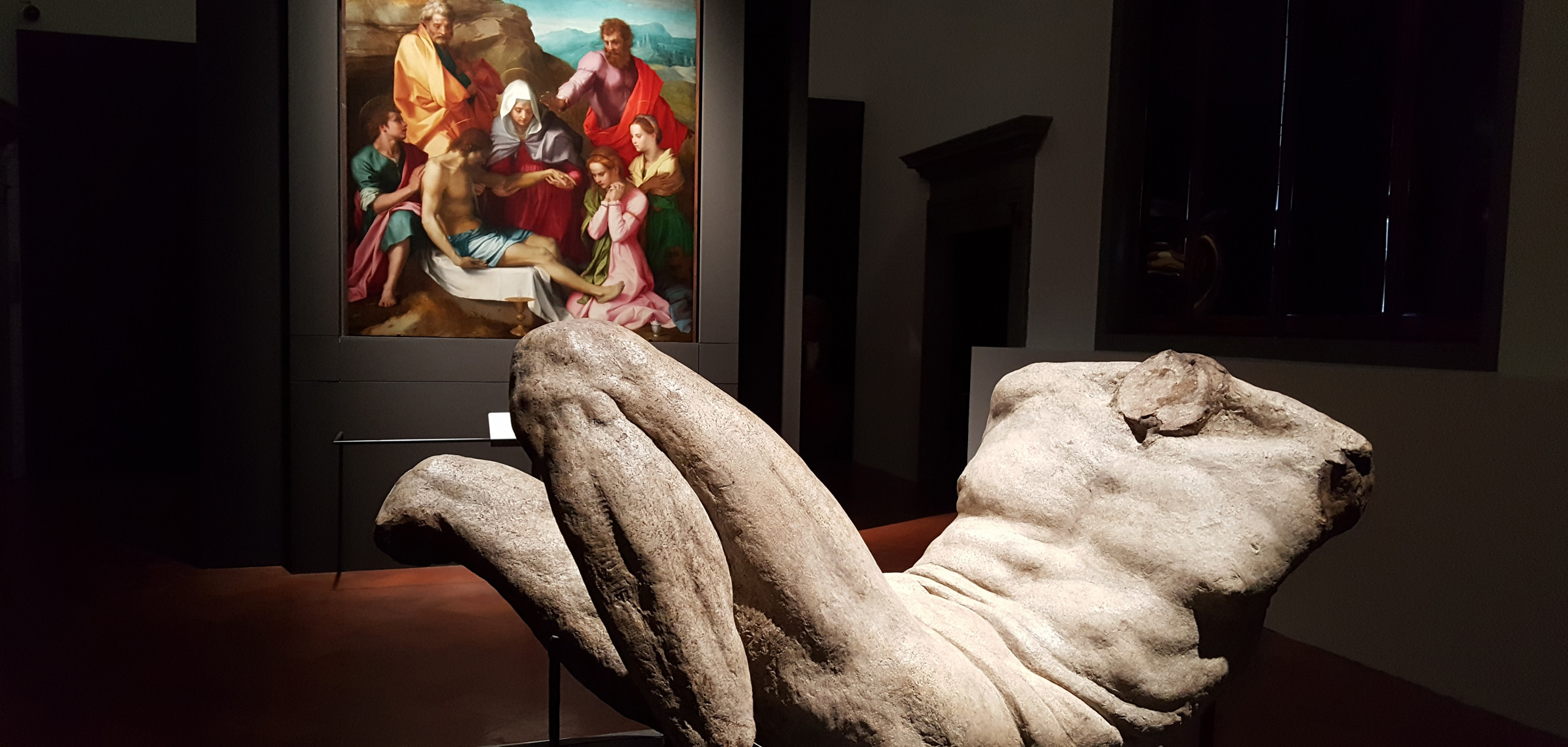
Il 500 a Firenze
This week opened at Palazzo Strozzi the highly anticipated exhibition “Il Cinquecento a Firenze", third and last chapter of a cycle of exhibitions that started with Bronzino in 2010 and Pontormo and Rosso Fiorentino in 2014.
While the previous two exhibitions focused on three of the most renowed masters active in Florence of that art movement called Mannerism, this last chapter is dedicated to all those great artists that worked in the second half of the XVI century and whose names are too often forgotten.
The figurative arts were deeply affected by the period of crisis that in the first half of the XVI century had concerned the catholic Church, whose doctrine had been attacked by the Lutherans, making necessary the intervention of the Council of Trent in the hope of reconciling Catholics and Protestants.
As a consequence of the Council, the display of images that showed any sign of opposition to the dogma were banned, precise guidelines were issued for artist who found themselves in the position of having to instruct the people to orthodoxy and fuel their devotion.
The result were representations that detached themselves from the experimentations that had characterized the art of the first Mannerism. Artists such as Santi di Tito, Alessandro Allori, Giorgio Vasari, Jacopo Zucchi, Giovanni Stradano, Girolamo Macchietti, Mirabello Cavalori, Giambologna, Bartolomeo Ammannati, Jacopo Coppi, Maso da San Friano, Giovanni Battista Naldini and Vincenzo Danti all moved towards simpler compositions of immediate understanding, with few characters and more adherence to the Sacred Scriptures.
They had to induce the believers to pray and engage them emotionally without falling into excesses of drama and theatricality.
The exhibition opens with the River God (il Dio Fluviale) by Michelangelo, a model made out of clay, sand, animal hair, vegetable fibers, wood, iron wire and wire mesh that was recently restored. The sculpture, made while he was still active in Florence, is placed right in front of the Pala di Luco by Andrea del Sarto one of the artists that was more copied and studied by his colleagues in the XVI century.
The exhibit continues with an exceptional confrontation of three altarpieces representing the Deposition of Christ, by Rosso Fiorentino, Pontormo and Bronzino, here put side by side for the first time in history, something we’ve only ever seen in textbooks. The display is spectacular, you will remain equally impressed by the absolutely innovative style of Rosso Fiorentino, by the bright yet delicate colors of Pontormo and by the elegance and attention to details of Bronzino. The vision of these three artworks alone, is worth the entrance ticket.
But this is but an introduction, some kind of recap of the previous two displays about Mannerism, the “real” exhibition starts in the third room. Seven huge altarpieces all reunited in one room awaits an astounded visitor. Here we start to see what happened after the Council of Trento: every artist interprets the guide lines of the Counter-Reformation with his personal style, but without forgetting the lessons of the great masters that came before them.
A section dedicated to Portrait follows, among the beautiful examples on display, stands out the portrait of Francesco I de’ Medici, great patron of the Arts who’s famous Studiolo in Palazzo Vecchio was decorated by the same Florentine artists whose works are on display in another exceptional room of this exhibition.
After so many art pieces whose theme revolved around the Sacred Scriptures, we find a section completely dedicated to the more profane topics: on display among many other artworks of mithologycal and allegorical character, you will find the Night by Michele di Ridolfo del Ghirlandaio, inspired by the sculpture Michelangelo made for the Sagrestia Nuova in San Lorenzo, the Charity by Poppi that comes from the Accademia Gallery and the beautiful sculptures by Giambologna and Vincenzo de’ Rossi, respectively the Fata Morgana and the Dying Adonis. In the following room there is a great altarpiece by Alessangro Allori representing the Miracle of San Fiacre, one of the 17 artworks that were restored for this occasion thanks to the contribution of Friends of Florence.
The exhibition closes with paintings and sculptures made between the XVI and the XVII century, such as the Vision of St Thomas Aquinas by Santi di Tito and the St Martin Sharing his Cloak with a Beggar by the great Pietro Bernini.
A worthy conclusion to this spectacular trilogy dedicated to the Florentine Mannerism, this exhibition is definitely one of a kind and can not be missed!
Palazzo Strozzi
From September 21st, 2017 to January 21st, 2018
Ticket: € 12, reduced € 9.50



